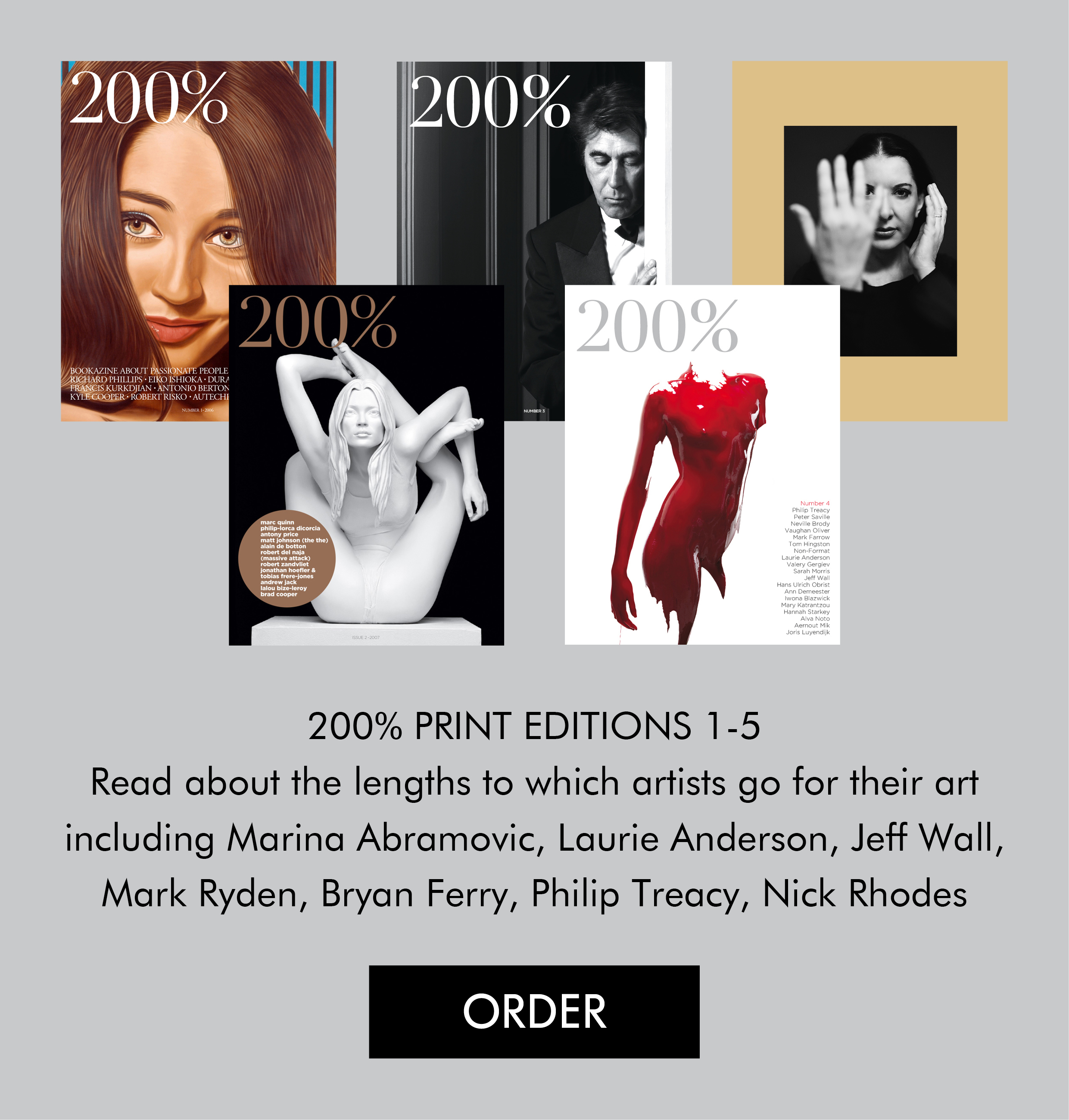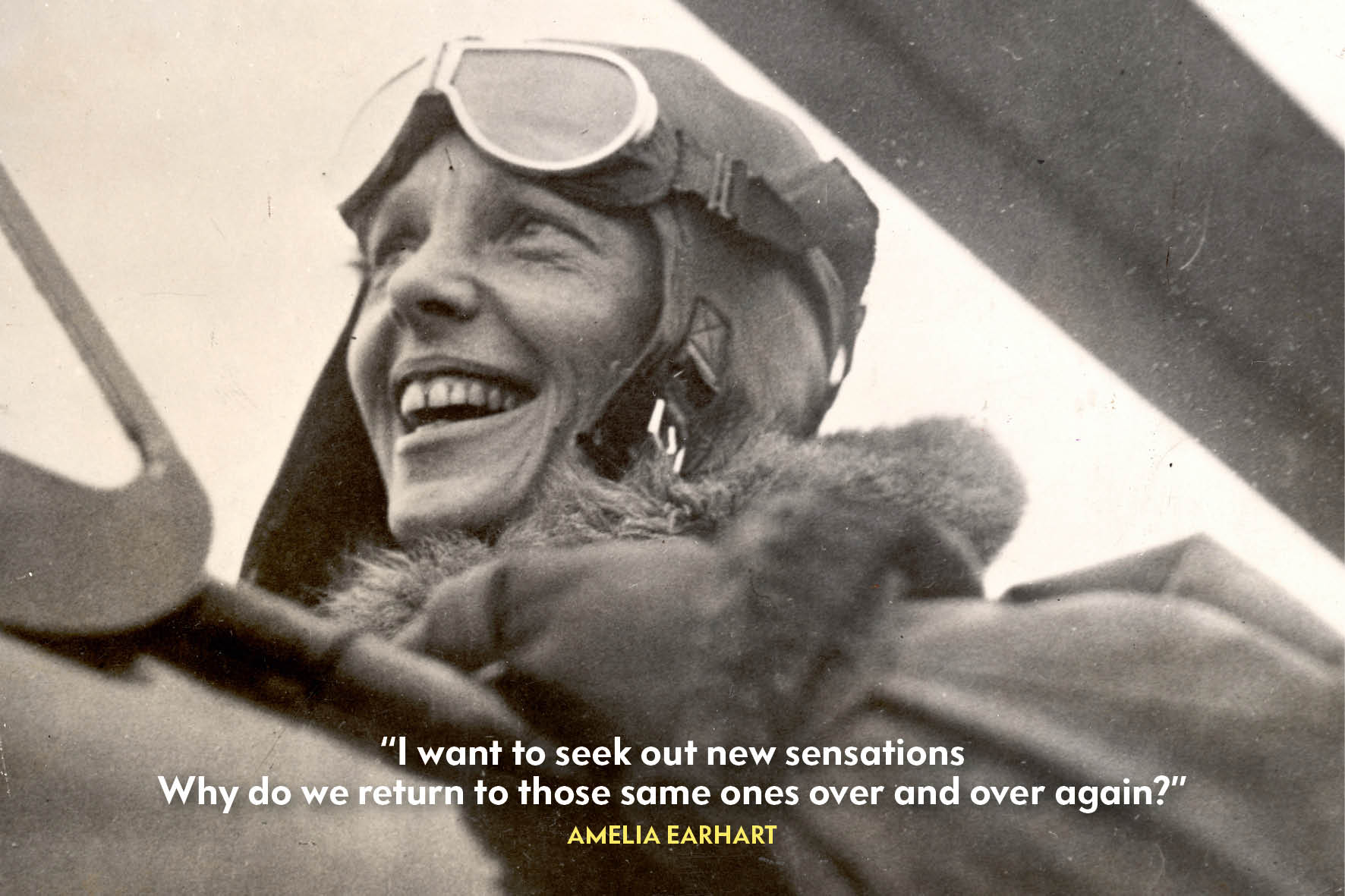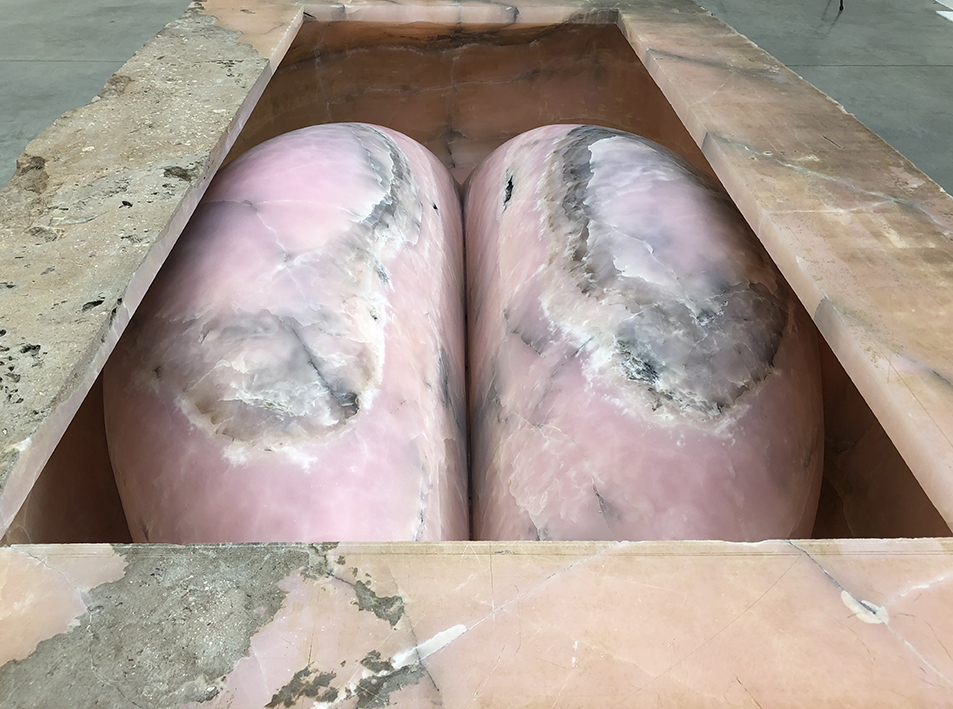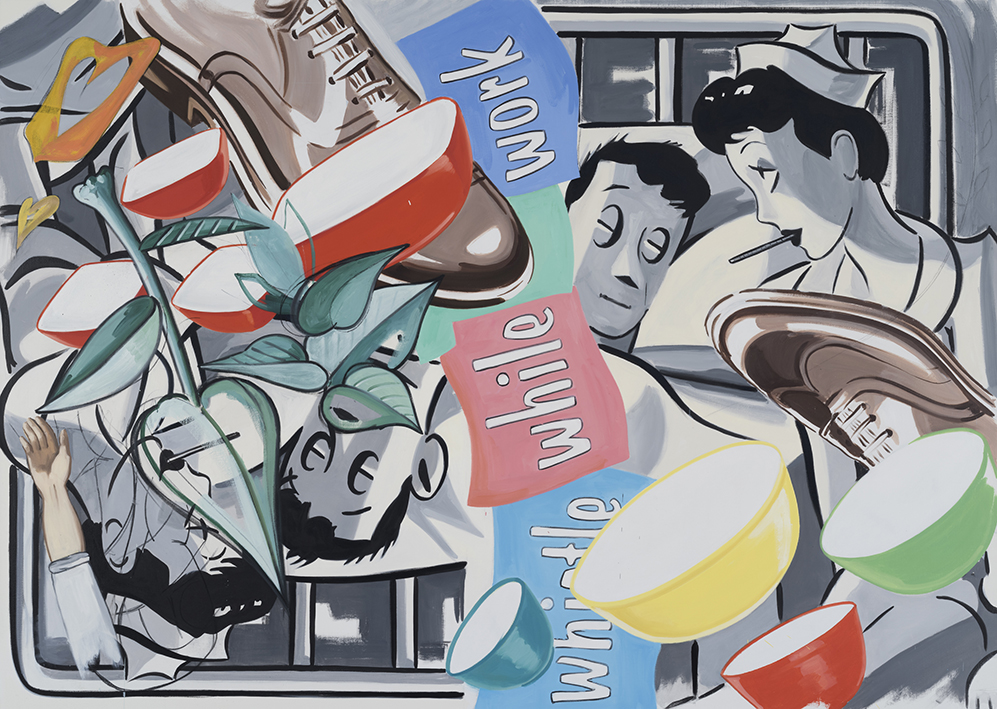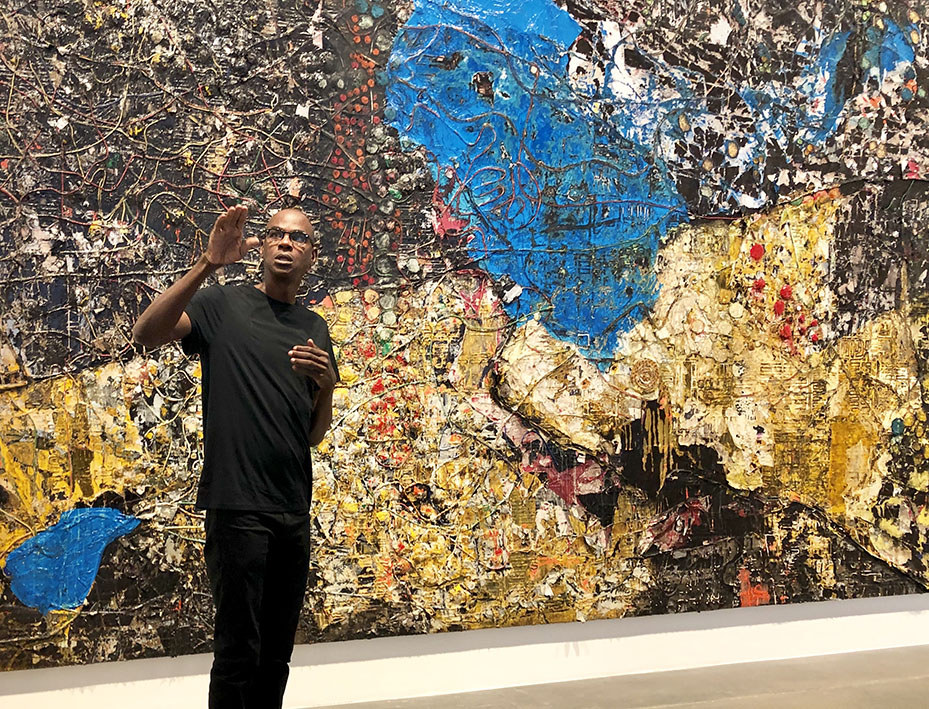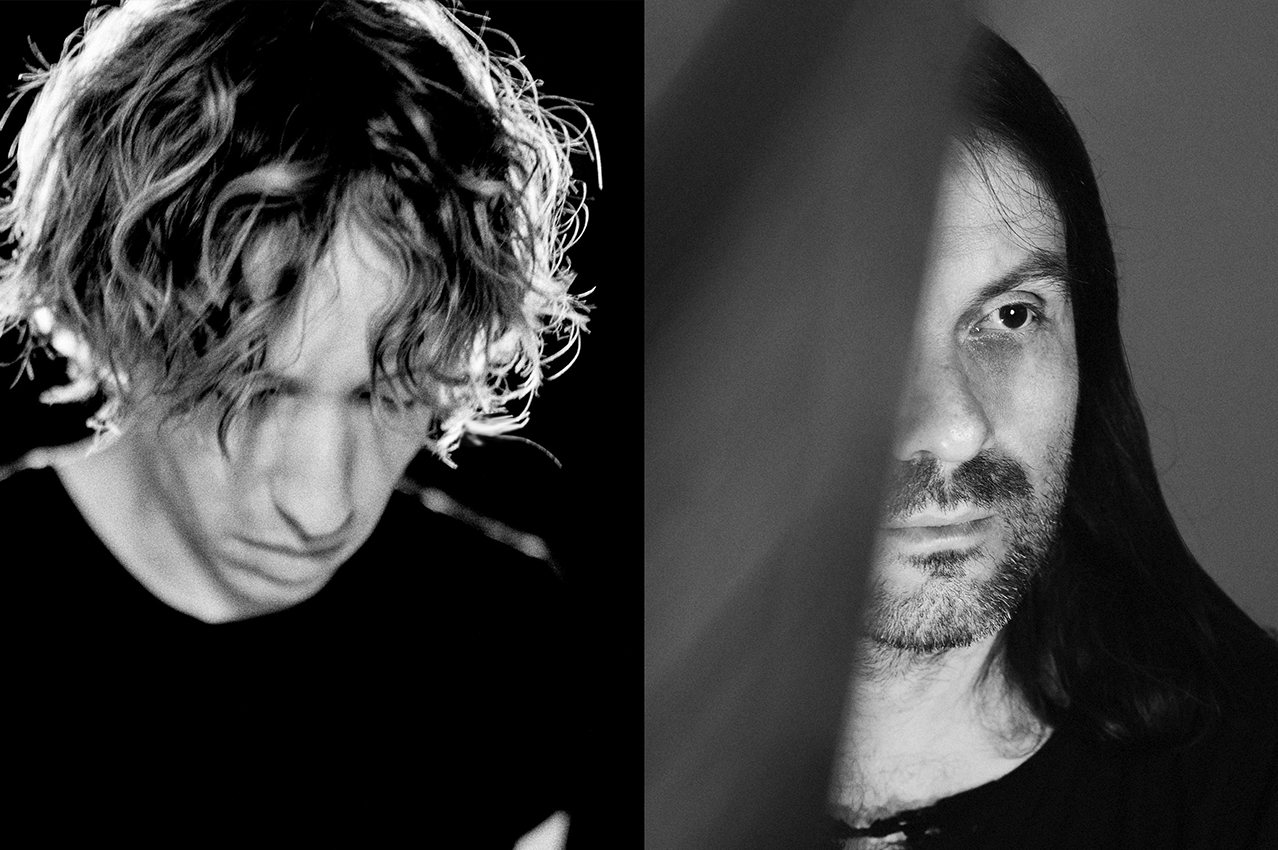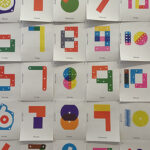 200% meets Christopher Raeburn, the designer who makes sustainable fashion – clothes made out of re-appropriated materials like military fabrics, parachutes, and deconstructed military garments that have been completely taken apart and reworked in his collections.
200%: What made you decide to make clothes out of re-appropriated material?
Christopher Raeburn: I’ve always been fascinated by military fabrics particularly as they lend itself to the right type of ‘hardware’, i.e., being waterproof and windproof, which is the basis for outerwear. Also, I’ve always been fascinated by outerwear. When you put the two elements together it became a truly interesting concept, particularly in re-using original garments to make something new. There is also something quite poignant in the fact that we’re taking old military garments, something that has been in a warehouse for up to 60 years, and giving it a completely new life.
200%: The contacts of how to gain access to the material from the Military – how did that came about?
Christopher Raeburn: I’ve been collecting pieces since I was 12, so I’ve built up a lot of contacts over the years. I’m very fortunate that people often contact me, as lots of people know about what I do – essentially people are looking for things for me, which is really quite fantastic, and also helps to keep the brand very fresh – with the continual search for new fabrics. For our Spring/Summer 2011 collection we have a tyvek Swedish snow camouflage – we haven’t put the holes in the fabric, they are the original camouflage – which became the inspiration for a lot of the rest of the Collection.
For our Autumn/Winter 2011 collection we’re going to work with Victorinox, who make the Swiss army knives. I’m working on a capsule collection with them for A/W 2011 and it’s an opportunity to broaden the range of products and opportunity to work with a brand I have always loved.
200%: Does your interest in military have a connection to your family background?
Christopher Raeburn: Not at all. I think it connects to my childhood. We lived in the heart of the country in Kent, South East of England, with the nearest shop being four distant. Thus, in the Summer myself, and my two older brothers, went out exploring: my parents imposed one rule in that, as long we were home by dark, there were no other ‘restrictions’ – this meant we had adventures every day. I believe I’ve adapted that ‘view’ to the rest of my career with regard to how things develop (i.e. there is no prescribed structure) as our adventures involved building stuff and making thing, i.e. a natural progression. What I truly like is the process – the fact that you’re researching something and then going all the way through to a final product that is, hopefully, commercially viable and also very appealing.
200%: Your clothes are made from recycled material, but you don’t see it in the end product as it looks brand new, elegant and sophisticated.
Christopher Raeburn: Ultimately, whilst being a sustainable designer, your product still has to be sell-able. In order for it to be appealing, taking account of the consumer views (re sustainability) garments still have to look new or considered: certainly my work has always been design-led first, and the fabrics come with it. For me, therefore, it’s really important that the design is correct. Thus, I tend to try to use fabrics that will help to make the garments more special.
With my fabrics it’s really a happy accident – I didn’t necessarily set out to be a sustainable or ethical designer, it’s just I love the fabrics, and when you put that together, with the [current] combination of manufacturing ethos in London, and the right design, aesthetically it works quite well.
200%: Your career in fashion is going quite fast, isn’t it?
Christopher Raeburn: Yes, this is actually my third season, the second one at London Fashion Week. It is the second time I’ve been here through the NEWGEN scheme and doing the re-appropriated fabric design. I started with that [re-appropriated fabric design] when I was on my Degree course, which was 8 years ago. Also, I undertook more work on this when I studied for my Masters at the Royal College of Art; subsequently, I spent a further two years working for other designers, freelance pattern cutting and designing. During that period I thought about what I wanted to do and here I am now two years later putting that into practice so it is actually a quite a quick process. I’m now the first designer that has won women and menswear NEWGEN in one season.
Interview written and conducted by Thierry Somers and Marie Drysdale (10/2010)
Picture: Christopher Raeburn, Spring/Summer 2011 Womenswear Collection, Tyvek Parka
200% meets Christopher Raeburn, the designer who makes sustainable fashion – clothes made out of re-appropriated materials like military fabrics, parachutes, and deconstructed military garments that have been completely taken apart and reworked in his collections.
200%: What made you decide to make clothes out of re-appropriated material?
Christopher Raeburn: I’ve always been fascinated by military fabrics particularly as they lend itself to the right type of ‘hardware’, i.e., being waterproof and windproof, which is the basis for outerwear. Also, I’ve always been fascinated by outerwear. When you put the two elements together it became a truly interesting concept, particularly in re-using original garments to make something new. There is also something quite poignant in the fact that we’re taking old military garments, something that has been in a warehouse for up to 60 years, and giving it a completely new life.
200%: The contacts of how to gain access to the material from the Military – how did that came about?
Christopher Raeburn: I’ve been collecting pieces since I was 12, so I’ve built up a lot of contacts over the years. I’m very fortunate that people often contact me, as lots of people know about what I do – essentially people are looking for things for me, which is really quite fantastic, and also helps to keep the brand very fresh – with the continual search for new fabrics. For our Spring/Summer 2011 collection we have a tyvek Swedish snow camouflage – we haven’t put the holes in the fabric, they are the original camouflage – which became the inspiration for a lot of the rest of the Collection.
For our Autumn/Winter 2011 collection we’re going to work with Victorinox, who make the Swiss army knives. I’m working on a capsule collection with them for A/W 2011 and it’s an opportunity to broaden the range of products and opportunity to work with a brand I have always loved.
200%: Does your interest in military have a connection to your family background?
Christopher Raeburn: Not at all. I think it connects to my childhood. We lived in the heart of the country in Kent, South East of England, with the nearest shop being four distant. Thus, in the Summer myself, and my two older brothers, went out exploring: my parents imposed one rule in that, as long we were home by dark, there were no other ‘restrictions’ – this meant we had adventures every day. I believe I’ve adapted that ‘view’ to the rest of my career with regard to how things develop (i.e. there is no prescribed structure) as our adventures involved building stuff and making thing, i.e. a natural progression. What I truly like is the process – the fact that you’re researching something and then going all the way through to a final product that is, hopefully, commercially viable and also very appealing.
200%: Your clothes are made from recycled material, but you don’t see it in the end product as it looks brand new, elegant and sophisticated.
Christopher Raeburn: Ultimately, whilst being a sustainable designer, your product still has to be sell-able. In order for it to be appealing, taking account of the consumer views (re sustainability) garments still have to look new or considered: certainly my work has always been design-led first, and the fabrics come with it. For me, therefore, it’s really important that the design is correct. Thus, I tend to try to use fabrics that will help to make the garments more special.
With my fabrics it’s really a happy accident – I didn’t necessarily set out to be a sustainable or ethical designer, it’s just I love the fabrics, and when you put that together, with the [current] combination of manufacturing ethos in London, and the right design, aesthetically it works quite well.
200%: Your career in fashion is going quite fast, isn’t it?
Christopher Raeburn: Yes, this is actually my third season, the second one at London Fashion Week. It is the second time I’ve been here through the NEWGEN scheme and doing the re-appropriated fabric design. I started with that [re-appropriated fabric design] when I was on my Degree course, which was 8 years ago. Also, I undertook more work on this when I studied for my Masters at the Royal College of Art; subsequently, I spent a further two years working for other designers, freelance pattern cutting and designing. During that period I thought about what I wanted to do and here I am now two years later putting that into practice so it is actually a quite a quick process. I’m now the first designer that has won women and menswear NEWGEN in one season.
Interview written and conducted by Thierry Somers and Marie Drysdale (10/2010)
Picture: Christopher Raeburn, Spring/Summer 2011 Womenswear Collection, Tyvek Parka
 200% meets Christopher Raeburn, the designer who makes sustainable fashion – clothes made out of re-appropriated materials like military fabrics, parachutes, and deconstructed military garments that have been completely taken apart and reworked in his collections.
200%: What made you decide to make clothes out of re-appropriated material?
Christopher Raeburn: I’ve always been fascinated by military fabrics particularly as they lend itself to the right type of ‘hardware’, i.e., being waterproof and windproof, which is the basis for outerwear. Also, I’ve always been fascinated by outerwear. When you put the two elements together it became a truly interesting concept, particularly in re-using original garments to make something new. There is also something quite poignant in the fact that we’re taking old military garments, something that has been in a warehouse for up to 60 years, and giving it a completely new life.
200%: The contacts of how to gain access to the material from the Military – how did that came about?
Christopher Raeburn: I’ve been collecting pieces since I was 12, so I’ve built up a lot of contacts over the years. I’m very fortunate that people often contact me, as lots of people know about what I do – essentially people are looking for things for me, which is really quite fantastic, and also helps to keep the brand very fresh – with the continual search for new fabrics. For our Spring/Summer 2011 collection we have a tyvek Swedish snow camouflage – we haven’t put the holes in the fabric, they are the original camouflage – which became the inspiration for a lot of the rest of the Collection.
For our Autumn/Winter 2011 collection we’re going to work with Victorinox, who make the Swiss army knives. I’m working on a capsule collection with them for A/W 2011 and it’s an opportunity to broaden the range of products and opportunity to work with a brand I have always loved.
200%: Does your interest in military have a connection to your family background?
Christopher Raeburn: Not at all. I think it connects to my childhood. We lived in the heart of the country in Kent, South East of England, with the nearest shop being four distant. Thus, in the Summer myself, and my two older brothers, went out exploring: my parents imposed one rule in that, as long we were home by dark, there were no other ‘restrictions’ – this meant we had adventures every day. I believe I’ve adapted that ‘view’ to the rest of my career with regard to how things develop (i.e. there is no prescribed structure) as our adventures involved building stuff and making thing, i.e. a natural progression. What I truly like is the process – the fact that you’re researching something and then going all the way through to a final product that is, hopefully, commercially viable and also very appealing.
200%: Your clothes are made from recycled material, but you don’t see it in the end product as it looks brand new, elegant and sophisticated.
Christopher Raeburn: Ultimately, whilst being a sustainable designer, your product still has to be sell-able. In order for it to be appealing, taking account of the consumer views (re sustainability) garments still have to look new or considered: certainly my work has always been design-led first, and the fabrics come with it. For me, therefore, it’s really important that the design is correct. Thus, I tend to try to use fabrics that will help to make the garments more special.
With my fabrics it’s really a happy accident – I didn’t necessarily set out to be a sustainable or ethical designer, it’s just I love the fabrics, and when you put that together, with the [current] combination of manufacturing ethos in London, and the right design, aesthetically it works quite well.
200%: Your career in fashion is going quite fast, isn’t it?
Christopher Raeburn: Yes, this is actually my third season, the second one at London Fashion Week. It is the second time I’ve been here through the NEWGEN scheme and doing the re-appropriated fabric design. I started with that [re-appropriated fabric design] when I was on my Degree course, which was 8 years ago. Also, I undertook more work on this when I studied for my Masters at the Royal College of Art; subsequently, I spent a further two years working for other designers, freelance pattern cutting and designing. During that period I thought about what I wanted to do and here I am now two years later putting that into practice so it is actually a quite a quick process. I’m now the first designer that has won women and menswear NEWGEN in one season.
Interview written and conducted by Thierry Somers and Marie Drysdale (10/2010)
Picture: Christopher Raeburn, Spring/Summer 2011 Womenswear Collection, Tyvek Parka
200% meets Christopher Raeburn, the designer who makes sustainable fashion – clothes made out of re-appropriated materials like military fabrics, parachutes, and deconstructed military garments that have been completely taken apart and reworked in his collections.
200%: What made you decide to make clothes out of re-appropriated material?
Christopher Raeburn: I’ve always been fascinated by military fabrics particularly as they lend itself to the right type of ‘hardware’, i.e., being waterproof and windproof, which is the basis for outerwear. Also, I’ve always been fascinated by outerwear. When you put the two elements together it became a truly interesting concept, particularly in re-using original garments to make something new. There is also something quite poignant in the fact that we’re taking old military garments, something that has been in a warehouse for up to 60 years, and giving it a completely new life.
200%: The contacts of how to gain access to the material from the Military – how did that came about?
Christopher Raeburn: I’ve been collecting pieces since I was 12, so I’ve built up a lot of contacts over the years. I’m very fortunate that people often contact me, as lots of people know about what I do – essentially people are looking for things for me, which is really quite fantastic, and also helps to keep the brand very fresh – with the continual search for new fabrics. For our Spring/Summer 2011 collection we have a tyvek Swedish snow camouflage – we haven’t put the holes in the fabric, they are the original camouflage – which became the inspiration for a lot of the rest of the Collection.
For our Autumn/Winter 2011 collection we’re going to work with Victorinox, who make the Swiss army knives. I’m working on a capsule collection with them for A/W 2011 and it’s an opportunity to broaden the range of products and opportunity to work with a brand I have always loved.
200%: Does your interest in military have a connection to your family background?
Christopher Raeburn: Not at all. I think it connects to my childhood. We lived in the heart of the country in Kent, South East of England, with the nearest shop being four distant. Thus, in the Summer myself, and my two older brothers, went out exploring: my parents imposed one rule in that, as long we were home by dark, there were no other ‘restrictions’ – this meant we had adventures every day. I believe I’ve adapted that ‘view’ to the rest of my career with regard to how things develop (i.e. there is no prescribed structure) as our adventures involved building stuff and making thing, i.e. a natural progression. What I truly like is the process – the fact that you’re researching something and then going all the way through to a final product that is, hopefully, commercially viable and also very appealing.
200%: Your clothes are made from recycled material, but you don’t see it in the end product as it looks brand new, elegant and sophisticated.
Christopher Raeburn: Ultimately, whilst being a sustainable designer, your product still has to be sell-able. In order for it to be appealing, taking account of the consumer views (re sustainability) garments still have to look new or considered: certainly my work has always been design-led first, and the fabrics come with it. For me, therefore, it’s really important that the design is correct. Thus, I tend to try to use fabrics that will help to make the garments more special.
With my fabrics it’s really a happy accident – I didn’t necessarily set out to be a sustainable or ethical designer, it’s just I love the fabrics, and when you put that together, with the [current] combination of manufacturing ethos in London, and the right design, aesthetically it works quite well.
200%: Your career in fashion is going quite fast, isn’t it?
Christopher Raeburn: Yes, this is actually my third season, the second one at London Fashion Week. It is the second time I’ve been here through the NEWGEN scheme and doing the re-appropriated fabric design. I started with that [re-appropriated fabric design] when I was on my Degree course, which was 8 years ago. Also, I undertook more work on this when I studied for my Masters at the Royal College of Art; subsequently, I spent a further two years working for other designers, freelance pattern cutting and designing. During that period I thought about what I wanted to do and here I am now two years later putting that into practice so it is actually a quite a quick process. I’m now the first designer that has won women and menswear NEWGEN in one season.
Interview written and conducted by Thierry Somers and Marie Drysdale (10/2010)
Picture: Christopher Raeburn, Spring/Summer 2011 Womenswear Collection, Tyvek Parka

